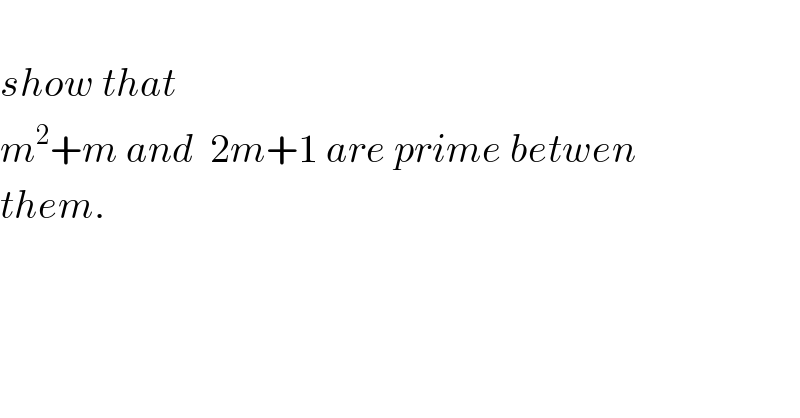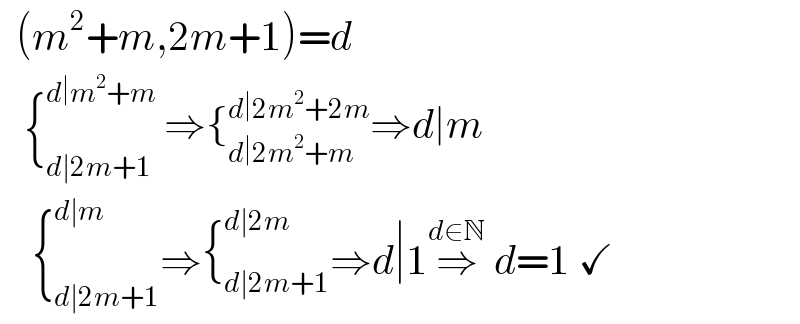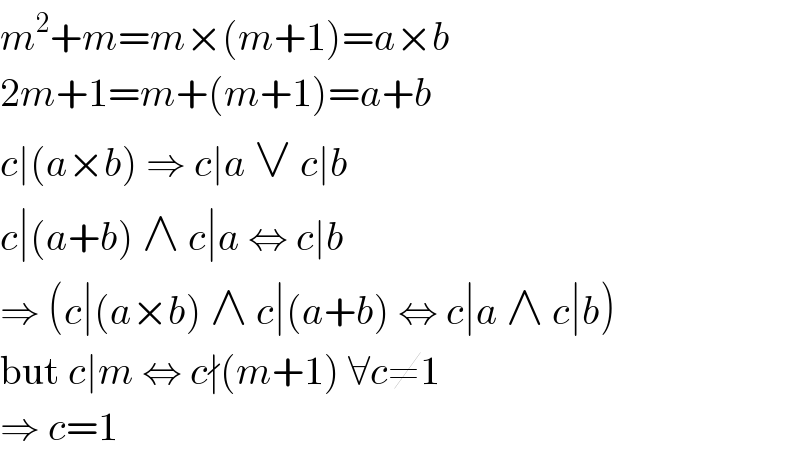
Question and Answers Forum
Question Number 126391 by mathocean1 last updated on 20/Dec/20

Answered by akornes last updated on 20/Dec/20
![for m ε Z^∗ −{−1} pgcd(m^2 +m ; 2m+1)=pgcd[m(m+1) ;m+(m+1)] =pgcd[m;(m+1)] =pgcd(m;1) =1 so m^2 +m and 2m+1 are prime betwen them](Q126397.png)
Commented by mathocean1 last updated on 20/Dec/20

Answered by mnjuly1970 last updated on 20/Dec/20

Answered by MJS_new last updated on 20/Dec/20

